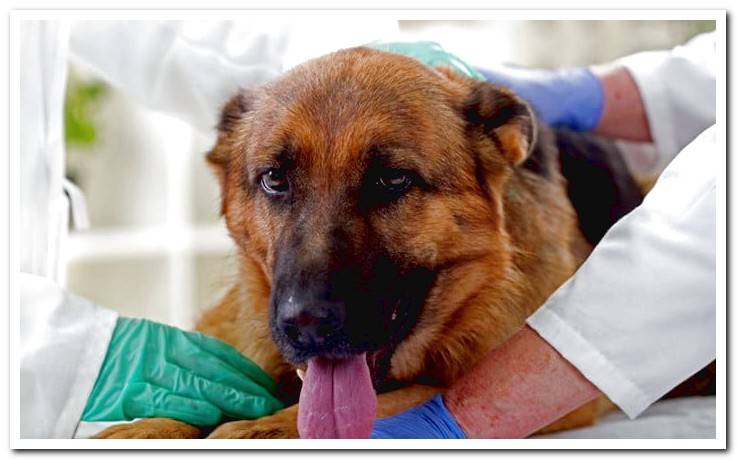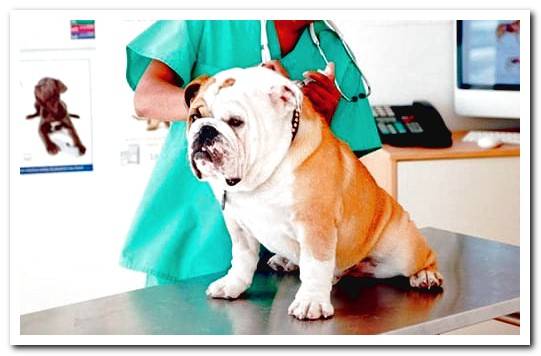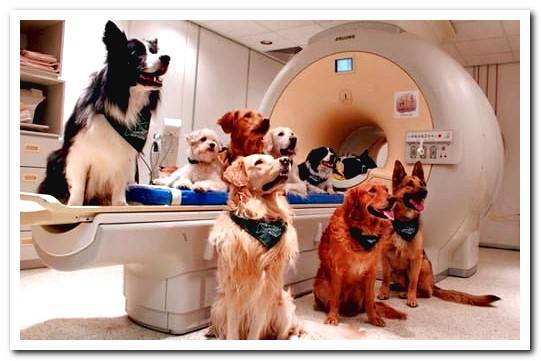
Cancer is a disease that affects more dogs every year, becoming one of the leading causes of dog death today. There are many types of cancer and not all are life-threatening, so it is important to know how to detect them and start appropriate treatment.
Let’s see what are the main symptoms that should raise all our alarms and go with our dog to a veterinary clinic so that after examining it, they can confirm if it is a malignant tumor.
Index of contents
- 1 Clinical signs of external tumors in dogs
- 2 Clinical signs of internal tumors in dogs
- 3 Common symptoms in dogs with cancer
- 4 How to prevent cancer in dogs
Clinical signs of external tumors in dogs
Many of the cancers that affect dogs will be detectable by physical examination. What we will find will be lumps or wounds on the skin and below. These tumors can be more or less smooth in surface, warty or not, and of very different dimensions.
In this way tumors will appear in the perianal area, in the testicles, in the mammary glands, in the mouth or in the lymph nodes. It is only by looking at our dog and regularly feeling it that we can detect them.
On the other hand, the veterinary review, at least annually, includes a thorough examination that also serves to detect cancer with these manifestations. Sometimes, tumors in the bones can also be suspected if we observe an inflammation in some extremity or in some area of bone.
Clinical signs of internal tumors in dogs
Cancer affects internal organs in the same way. Among them, the most frequently damaged are the spleen, liver and gastrointestinal tract. Both the liver and lungs are organs that are frequently affected by metastasis. Cancer begins in another part of the body but manages to reproduce and affect other areas.
In the internal organs tumors are not externally observable For this reason, the diagnosis may already come at a very advanced stage of the disease. Symptoms that must make us suspect are weight loss, the appearance of masses that can be felt in the abdominal area, vomiting, diarrhea, constipation or gastrointestinal bleeding.
Furthermore, cancer is more common in middle and older dogs. That is why it is important, not only to go to veterinary reviews, but periodically explore it ourselves at home. From the age of seven it is recommended to start these exams. A review and at least a blood test is ideal.

Common symptoms in dogs with cancer
As there are several different types of cancer, the symptoms may also be different, depending on the type of cancer you have. Skin cancer shows clear signs of skin problems, but bone cancer, for example, is not noticeable to the naked eye.
That is why we must pay attention not only to what we can or could see with the naked eye, such as skin problems or strange lumps, but we must pay attention to what we appreciate in general:
- Unwarranted tiredness and fatigue
- Febrile states
- Unwarranted weight loss
- Lack of appetite, loss of appetite
- Fall of mood
- Pain and / or whining
- Obvious symptoms such as: Bald spots, hair loss, strange lumps, inflammations, bleeding.
If we see one or more of these symptoms in our dog, we should go to a vet for a complete check-up and a diagnosis.
The usual tests to find out if a dog has cancer consist of blood collection, stool test, X-ray plate, ultrasound if necessary and even an MRI in more complex cases.
These symptoms may be caused by another disease other than cancer, so we should not be alarmed. We simply have to do a review and the vet will be the one who gives us the results.

How to prevent cancer in dogs
There are several tips that can help prevent cancer in our dog, obviously they are tips applicable to humans as well (for the most part). No one can claim to know exactly why cancer occurs, but we can avoid it by following these simple tips:
- Feed our dog with the best dog food or failing that with a 100% natural diet such as the BARF diet.
- Exercise daily with our dog, always applying common sense depending on its size and age. It is not enough to leave once and end … a dog needs several outings a day.
- Use nutritional supplements for dogs that provide benefits to their immune and digestive systems.
- Neutering our dog or bitch when the vet tells us to (usually between 9 and 15 months old). Not to be confused with spaying, the vet should castrate / empty.
- Prevent our dog from being exposed to the sun during the strongest hours. All dogs love the sun, but if it is summer and it is three in the afternoon being at forty degrees … the sun is too strong for him, avoid prolonged exposure (napping in the sun).
And above all, the most important thing of all, is to go to a vet if we see any symptoms. An early diagnosis is half a battle won. Nobody is going to tell you on the Internet if your dog has cancer or not, because it is necessary to carry out precision medical tests, go to the vet and do a checkup on the dog.
